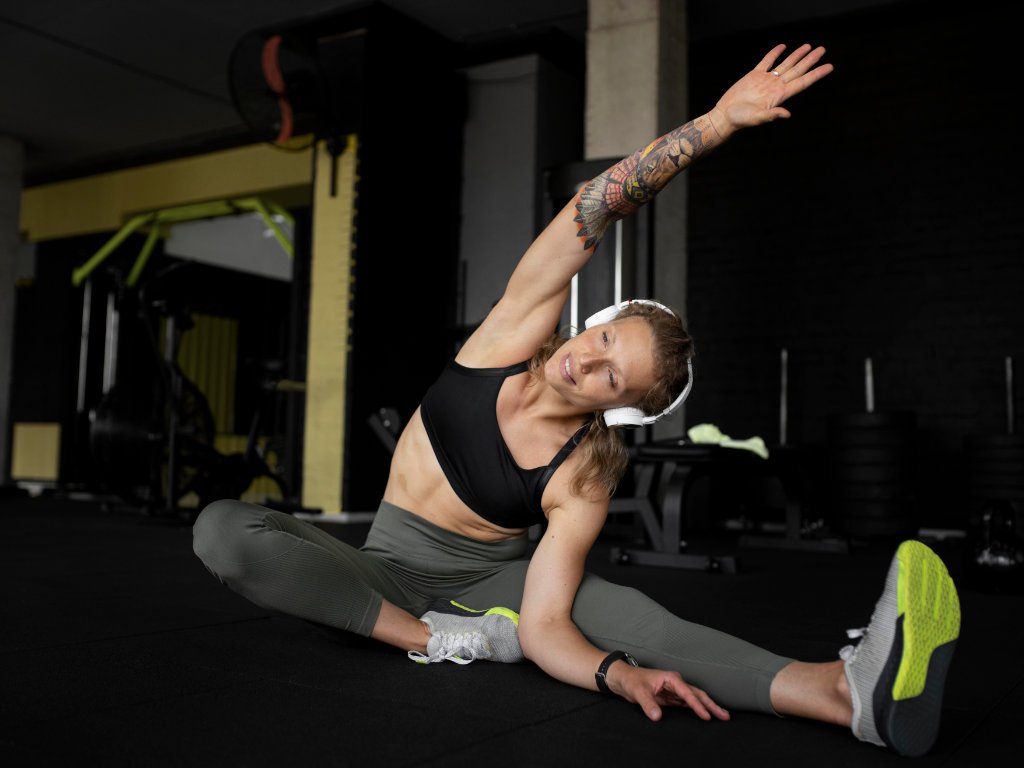Table of Contents
Picture this: you’ve just crushed an amazing workout. Your muscles are screaming, sweat’s dripping, and you feel like you could conquer the world. But here’s the million-dollar question—what happens next? If you’re like most people, you probably grab your water bottle, maybe do a quick stretch, and call it a day. But what if I told you that your post-exercise routines could be the game-changer that transforms your fitness journey from ordinary to extraordinary?
The truth is, what you do after your workout is just as crucial as the workout itself. Your post-exercise routine isn’t just about cooling down—it’s about maximizing every single rep, every bead of sweat, and every minute you’ve invested in your health. Let’s dive deep into why these routines matter and how you can create the perfect recovery blueprint that’ll have you bouncing back stronger than ever.
Understanding the Science Behind Post-Exercise Routines
Here’s something that might blow your mind: most of the magic happens after you leave the gym. While you’re crushing those squats or powering through that cardio session, you’re actually creating tiny tears in your muscle fibers. Sounds scary, right? Don’t worry—this is exactly what you want!
Post-exercise routines are all the strategic activities you do after working out to help your body repair, recover, and come back stronger. Think of it as giving your body a roadmap to rebuild itself better than before. Research shows that proper recovery protocols can significantly impact your performance, reduce injury risk, and accelerate your progress.
The real kicker? Your body continues working hard for hours—sometimes even days—after you’ve finished exercising. During this recovery phase, your muscles repair those tiny tears, your cardiovascular system adapts, and your nervous system recharges. Skip the proper post-workout care, and you’re basically leaving gains on the table.
Why Recovery Techniques Are Your Secret Weapon
Let’s get real for a second. How many times have you pushed through a workout only to feel like you got hit by a truck the next day? We’ve all been there! This is where smart recovery techniques become your best friend.
Foam rolling and massage aren’t just luxuries—they’re performance enhancers. When you roll out those tight spots, you’re literally helping your body flush out metabolic waste and increase blood flow to hungry muscles. It’s like giving your circulation system a gentle kick in the right direction.
But here’s where it gets interesting: active recovery might be even more powerful than complete rest. Light activities like walking, gentle swimming, or easy cycling can actually speed up your recovery process. Medical research indicates that active recovery increases circulation, helping shuttle nutrients to your muscles while removing waste products more efficiently than lying on the couch.
Now, don’t get me wrong—rest is still king. Your body needs those complete rest days to truly repair and adapt. UCLA Health experts recommend taking at least one full rest day per week to prevent overtraining and reduce injury risk.
Conquering Muscle Soreness Before It Conquers You

Ah, DOMS—delayed onset muscle soreness. That “I can barely walk down the stairs” feeling that hits 24-48 hours after a tough workout. While some soreness is normal (and even a good sign that you challenged yourself), excessive soreness can derail your fitness momentum.
The good news? Strategic post-exercise routines can significantly reduce muscle soreness. When you exercise, you create microscopic damage to muscle fibers. While this sounds bad, it’s actually how muscles grow stronger. The soreness comes from inflammation and the accumulation of metabolic byproducts in your tissues.
Your post-workout routine becomes your defense system against excessive soreness. Simple strategies like staying hydrated, gentle stretching, and maintaining blood flow through light movement can make the difference between feeling energized for your next workout versus feeling like you need a week to recover.
The Stretching Revolution: More Than Just Flexibility
Let’s talk about stretching—and I promise this won’t be boring! Stretching benefits extend far beyond just touching your toes or looking flexible at the gym. When done correctly after exercise, stretching becomes a powerful tool for recovery and performance enhancement.
Static stretching is your post-workout MVP. Unlike dynamic stretching (which is better for warm-ups), static stretches involve holding positions for 15-30 seconds. This allows your muscles to gradually lengthen and release tension built up during exercise. Scientific evidence suggests that regular stretching can improve range of motion, reduce muscle stiffness, and potentially decrease injury risk.
Some game-changing post-workout stretches include:
- Hamstring stretches (sitting or standing variations)
- Hip flexor stretches (especially crucial if you sit a lot during the day)
- Shoulder and chest stretches (perfect after upper body workouts)
- Calf stretches (your lower legs will thank you)
The key is consistency. Five minutes of quality stretching after each workout beats an hour-long stretching session once a week.
Hydration: The Ultimate Performance Enhancer
Water might seem basic, but it’s absolutely fundamental to your recovery. During exercise, you’re not just losing water—you’re losing electrolytes, and your body’s ability to function optimally depends on restoring this balance quickly.
Here’s a practical approach to post-workout hydration: aim for 16-24 ounces of fluid within the first hour after exercise. But don’t just chug water blindly—pay attention to your thirst, urine color, and how you feel. If you’ve had an intense or long workout, especially in hot conditions, consider adding electrolytes back into the mix.
Sports drinks aren’t always necessary, but they can be helpful after longer or more intense sessions. Look for options with a 3:1 or 4:1 ratio of carbohydrates to protein, which can enhance both hydration and recovery.
Dehydration can seriously impact your recovery, slowing down protein synthesis, reducing blood flow to muscles, and making you feel more fatigued than necessary.
Fueling Your Recovery: Smart Nutrition Strategies
Food is fuel, but post-workout nutrition is like premium fuel for a race car. What you eat after exercise directly impacts how quickly and effectively your body recovers.
The magic window isn’t as narrow as once thought, but eating within 30-60 minutes post-workout can optimize your recovery. Your body is primed to absorb nutrients and start the rebuilding process.
The perfect post-workout meal combines:
- Carbohydrates to replenish glycogen stores
- Protein to repair and build muscle tissue
- Healthy fats to support hormone production and reduce inflammation
Some winning combinations:
- Greek yogurt with berries and a sprinkle of granola
- Chocolate milk (yes, really!)
- Lean chicken with sweet potato
- A protein smoothie with banana and spinach
- Eggs with avocado toast

Don’t stress too much about being perfect—consistency matters more than perfection. Even a simple piece of fruit with some nuts can jumpstart your recovery process.
Creating Your Personal Post-Exercise Blueprint
Now here’s where the rubber meets the road. Your ideal post-exercise routine should be as unique as your fingerprint. What works for your gym buddy might not work for you, and that’s perfectly okay!
A solid framework includes:
- Cool-down phase (5-10 minutes of light movement)
- Immediate hydration (start sipping right away)
- Strategic stretching (focus on muscles you just worked)
- Nutrition timing (fuel up within an hour)
- Recovery planning (what’s next for your body?)
For beginners, start simple. Pick one or two elements and master them before adding more complexity. Maybe you focus on stretching and hydration for the first month, then gradually add in foam rolling or specific nutrition strategies.
Advanced exercisers might incorporate techniques like contrast showers (alternating hot and cold water), meditation for mental recovery, or even tracking heart rate variability to monitor recovery status.
Advanced Recovery Strategies for Serious Athletes
Ready to level up your recovery game? Let’s explore some advanced techniques that can take your post-exercise routines to the next level.
Contrast therapy involves alternating between hot and cold treatments. Think ice baths followed by hot showers, or sauna sessions followed by cold plunges. While the research is mixed, many athletes swear by these methods for reducing inflammation and speeding recovery.
Compression garments can help improve circulation and reduce muscle vibration during recovery. While they won’t work miracles, wearing compression tights or sleeves for a few hours post-workout might help some people feel better faster.
Sleep optimization might be the most underrated recovery tool. Quality sleep is when your body releases growth hormone, consolidates memories from your workout, and performs most of its repair work. Prioritizing 7-9 hours of quality sleep can dramatically impact your recovery and performance.
For those interested in natural recovery support, consider exploring natural supplements that enhance recovery or learning about stress management techniques that can improve your overall recovery capacity.
Common Post-Workout Mistakes to Avoid
Let’s be honest—we all make mistakes, especially when we’re starting out. Here are some common post-workout blunders that could be sabotaging your progress:
Mistake #1: The immediate couch collapse. I get it—you’re tired! But going from intense exercise to complete inactivity can cause blood to pool in your extremities and make you feel worse. Always include a proper cool-down period.
Mistake #2: Forgetting about nutrition timing. Waiting hours to eat after a workout misses the window when your body is primed for recovery. Keep easy post-workout snacks handy.
Mistake #3: Overdoing the stretching. More isn’t always better. Aggressive stretching on already fatigued muscles can actually cause injury. Keep it gentle and controlled.
Mistake #4: Ignoring pain signals. There’s a difference between normal muscle fatigue and actual pain. Learn to listen to your body and adjust accordingly.
Mistake #5: All-or-nothing thinking. If you can’t do your full routine, don’t skip recovery entirely. Even five minutes of stretching or drinking water is better than nothing.
The Mental Side of Recovery
Here’s something people don’t talk about enough—recovery isn’t just physical. Your mind needs to recover too, and your post-exercise routine can be the perfect time to address both aspects.
Consider incorporating meditation techniques or mindfulness practices into your cool-down. Even five minutes of deep breathing can help shift your nervous system from the sympathetic (fight or flight) state back to parasympathetic (rest and digest) mode.
Journaling about your workout—what felt good, what was challenging, how you’re feeling—can help you process the experience and plan for future sessions. This mental processing is just as important as the physical recovery happening in your muscles.
Building Long-Term Recovery Habits

The most effective post-exercise routines are the ones you actually stick to. Rather than trying to implement everything at once, focus on building sustainable habits that fit into your lifestyle.
Start with the basics: hydration, gentle movement, and one or two stretches. Once these become automatic (usually takes about 3-4 weeks), gradually add other elements.
Track your recovery just like you track your workouts. Note how you feel the day after different types of sessions. Do you recover faster when you stretch? When you drink more water? When you get better sleep? Use this data to refine your routine.
Remember that your needs will change over time. What works during a building phase might need adjustment during a cutting phase. Seasonal changes, life stress, and training intensity all impact recovery needs.
Integrating Recovery with Your Overall Wellness Plan
Your post-workout routine shouldn’t exist in isolation—it should be part of your broader health and wellness strategy. Consider how your recovery practices complement other aspects of your lifestyle.
If weight loss is a goal, learn about foods that boost weight loss or explore metabolism boosting strategies that can enhance your results.
For those focused on building strength, understanding muscle recovery supplements might provide additional support to your natural recovery processes.
Women especially might benefit from understanding hormonal balance in relation to exercise recovery, as hormonal fluctuations can significantly impact recovery needs.
FAQ: Your Most Pressing Post-Exercise Questions Answered
How long should my post-workout routine take?
A basic routine can be completed in 10-15 minutes, including light cool-down movement, stretching, and immediate hydration. More comprehensive routines might take 20-30 minutes, but even 5 minutes is better than nothing.
Is it normal to feel worse after starting a recovery routine?
Sometimes, yes! If you’re new to stretching or foam rolling, you might experience temporary soreness as your body adjusts. Start gentle and gradually increase intensity.
Should I do the same routine after every workout?
Not necessarily. Your routine should adapt based on workout intensity, muscle groups worked, and how you’re feeling. Have a basic framework but allow for flexibility.
Can I skip recovery if I’m not sore?
Lack of soreness doesn’t mean lack of need for recovery. Your body is still adapting and repairing even when you feel good. Consistency in recovery practices helps maintain this positive state.
How do I know if my recovery routine is working?
Look for signs like consistent energy levels, ability to maintain workout intensity, reduced excessive soreness, improved sleep quality, and overall sense of well-being.
Making It Sustainable: Your Next Steps
The best post-exercise routine is the one you’ll actually do consistently. Start small, be patient with yourself, and remember that building new habits takes time.
Choose one recovery strategy to focus on this week. Maybe it’s drinking more water immediately after your workout, or holding three stretches for 30 seconds each. Master that, then add another element.
Track your progress—not just in terms of fitness gains, but in how you feel, sleep quality, energy levels, and overall well-being. These markers often improve before you see physical changes and can be incredibly motivating.
Remember, you’re not just building a post-workout routine—you’re building a lifestyle that supports your long-term health and fitness goals. Every small step counts, every consistent action builds momentum, and every recovery session is an investment in your future self.
Your body works incredibly hard for you every single day. Isn’t it time you returned the favor with a recovery routine that shows your muscles, joints, and nervous system the respect they deserve? Start today, start small, but most importantly—just start. Your future self will thank you for every single post-workout stretch, every glass of water, and every moment you invest in proper recovery.



1 comment
[…] matters too. Post-workout nutrition benefits from higher protein amounts (15-25 grams), while between-meal snacks can be lower (5-10 […]